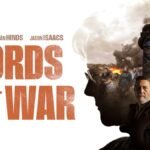Now Reading: “Video Nasties in 2025: Are These Banned Horror Films Still Shocking?”
-
01
“Video Nasties in 2025: Are These Banned Horror Films Still Shocking?”
“Video Nasties in 2025: Are These Banned Horror Films Still Shocking?”
Video Nasties in 2025: Are These Banned Horror Films Still Shocking?
Last night, I curled up on my sofa with a brew and clicked ‘play’ on Zombie Flesh Eaters. Forty years ago, that simple act would’ve made me a criminal. Back when Thatcher was in power and moral panic was all the rage, this Italian gore-fest was public enemy number one on the infamous ‘video nasties’ list. Now? It’s sandwiched between The Great British Bake Off and Love Island in my streaming queue.
The Wild History of Video Nasties
Picture this: It’s 1984, and Daily Mail readers are having kittens over films like Zombie Flesh Eaters corrupting Britain’s youth. The government’s response? Ban everything that made pearl-clutchers reach for their smelling salts. But here’s the thing – most of these “dangerous” films were about as threatening as a rubber chicken.
Zombie Flesh Eaters itself has a properly bonkers backstory. It started life as an Italian cash-in on George Romero’s Dawn of the Dead (renamed Zombi), then morphed into Zombi 2, before finally landing on British shores with its infamous title. The film’s greatest crime? Having zombies fight a shark underwater. I’m not making this up.
2025: When Video Nasties Got Posh
Arrow streaming’s decision to showcase these once-banned films feels less like rebellion and more like the British Library displaying punk zines. These films have gone from contraband to curated content. Watching them now, between doom-scrolling TikTok and ordering Deliveroo, they feel more like historical artifacts than agents of moral decay.
The special effects that had MPs foaming at the mouth look positively quaint compared to what you’ll find in the average episode of House of the Dragon. Though I must admit, that eyeball-skewering scene still made me spill my tea.
Why These Films Still Matter
Here’s the kicker – these “video nasties” tell us more about 1980s Britain than they do about flesh-eating zombies. They’re time capsules of a country grappling with moral boundaries, artistic freedom, and the democratisation of entertainment. Sound familiar? Just swap VHS tapes for TikTok and you’ve got 2025’s moral panic blueprint.
FAQ: Your Video Nasties Questions Answered
What exactly were ‘video nasties’?
The term refers to 72 films banned in the UK during the 1980s under the Video Recordings Act. These films were deemed too violent or obscene for home viewing, though many seem tame by today’s standards.
Are all video nasties legal now?
Most are available in their uncut form, though some remain partially censored. Arrow’s streaming service offers many with their original controversial scenes intact.
Is Zombie Flesh Eaters worth watching in 2025?
If you fancy a slice of horror history with your Friday night takeaway, absolutely. It’s more fascinating than frightening, offering a glimpse into both Italian horror cinema and British censorship history.
The Bottom Line
Was Thatcher right to ban these films? Not bloody likely. But their journey from public menace to streaming curiosity says volumes about how far we’ve come. These days, the real video nasties might be those endless TikTok dance challenges.
Fancy a proper horror history lesson? Arrow’s streaming Zombie Flesh Eaters this month. Just don’t blame me if you find yourself giggling more than screaming. And whatever you do, don’t tell your nan – she might still have her “Ban the Video Nasties” badge somewhere.








